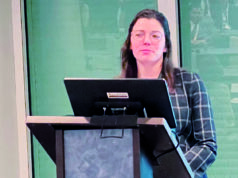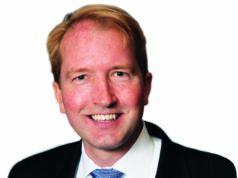
In the classic 1991 movie, “New Jack City,” drug dealer Nino Brown rhetorically asks his gang (the Cash Money Brothers), “Am I my brother’s keeper?”
Nino’s subsequent murder spree suggests he was not. This well-known phrase first appeared in the Bible, though not in the context with which we are familiar. God approached Cain and inquired about the whereabouts of Abel. Cain, having recently killed his brother Abel, responds, “Am I my brother’s keeper?” Cain, it seems, was a bit of a tool. Despite its morally nebulous connotation in religion and popular culture, this idiom has taken on a different meaning: an expression of support for our peers.
Surgeons around the U.S. are suffering from mental exhaustion, substance abuse, burnout, and suicide. Treatment to date has been sporadic, inconsistent and mostly ineffective. So now it is time for surgeons to ask ourselves, “Are we our siblings’ keepers?”
Why are surgeons suffering? We are exposed to sickness, disability, pain, trauma, and death on a near-daily basis. That comes with the job. But how do we deal with this? What defenses do we deploy? Which defenses are helpful? Most importantly, which are harmful to either ourselves or our patients? As one might expect from a profession as singular as surgery, our responses to stress are fairly unique as well.
Defense mechanisms are often characterized by how primitive they are. The most primitive are learned in childhood and are sometimes retained because of their short-term efficacy. The trouble with primitive defenses is that, in the long term, they are ineffective and often harmful. As surgeons, our defense mechanisms are a mixed bag. Denial, altruism, depersonalization and humor are the most commonly employed. Without these defenses, we would succumb to guilt, fear, and despair. It is a difficult balance.
The very techniques that save us can quickly become destructive, even fatal. Altruism taken too far can lead to martyrdom. Martyrdom is a self-destructive condition in which the surgeon ignores their own well-being and that of their family.
Depersonalization is an essential tool for surgeons. But when the disconnect is taken too far, burnout will ensue. Denial is one of the most primitive reflexes, a refusal to accept reality. Denial is highly effective in the short term—and highly destructive over time. Sublimation is one of the more mature defenses and is commonly expressed by surgeons as humor. Humor allows the channeling of unacceptable feelings into the acceptable.
Darker impulses
Of course, there are darker defense mechanisms that some surgeons deploy. Acting out is the hallmark of the disruptive surgeon: extreme behavior as a form of self-expression. Finally, substance abuse and even suicide are other means of defense surgeons employ disproportionately.
Surgeons must learn to balance empathy and emotional dissociation to make our jobs possible. Learning this duality may be more effective when done with a peer group. For most physicians, our experience with peer group interactions occurs early in medical school in an unusual place: the gross anatomy lab.
Through the early 1900s, cadaver dissection was illegal in many parts of the U.S. Wealthier medical students traveled to Europe to learn anatomy. The less fortunate had to deal with grave robbers or, worse, become one.
Objections to cadaver training were also rooted in the theory that students would become hardened by the process, learning that the human body was simply an object to study. The students themselves, however, clearly valued the experience. The scarcity of cadavers in the U.S. meant that students had to perform anatomic dissection as a team. A new method of learning resulted—group hands-on study.
Looking through medical school photographs from the early 20th century, the most popular manner for a student to pose was with their anatomy group in the cadaver lab. Medical students viewed this activity as an ideal setting to portray their experience. Through the dissections and their peer groups, students were learning the “scientific” and “affective” aspects of medicine. Even though the anatomy groups formed out of necessity, it appears that medical students thrived as a consequence. In retrospect, it was our first evidence of the efficacy of peer support for physicians facing depersonalization.
Some of the photos of the cadaver groups from the early 1900s show the body posed as if alive. While distasteful by today’s standards, this does demonstrate the employment of sublimation to confront the conflicting feelings that human dissection engenders. Recently, facing new pressure to shorten or eliminate anatomy courses, defenders have cited the benefit of cadaver dissection as the first step toward learning medical professionalism.
Our struggle to balance empathy and emotional distance only begins in medical school. In 2000, Albert Wu published the landmark article “Medical error: The second victim.” Suddenly, this secret was exposed. Doctors who appear uncaring or detached after an adverse event are actually trying to cope with their own suffering. Researchers have attempted to characterize the stages of physiological and psychological responses physicians exhibit after an untoward patient outcome.
Surgeon–patient relationship
Surgeons, however, demonstrate a pattern of behavior unique from other physicians. This is likely due to the intimacy surgery imparts on the doctor-patient relationship. Surgeons generally follow a four-stage response to major complications. Stage one, “the kick,” is characterized by anxiety, physiologic stress and feelings of failure.
In stage two, “the fall,” surgeons become wrapped in feelings of loss of control. This occurs concurrently with a desperation to right the ship. Stage two is a pivotal point, and the surgeon’s personal and professional life can become consumed. As the surgeon reaches stage three, “the recovery,” they begin to deploy their coping mechanisms.
At this point, most surgeons are open to discussing the event, especially with peers. Based on the result of stage three, a broad range of outcomes are possible in the final stage: “long-term impact.” Here, the cumulative effects of these events are brought to bear on the surgeon’s sense of self. Some surgeons learn and take positivity from the experience. Others become riddled with doubt.
While the surgeon goes through this process, what is the institution’s response to a major adverse event? First, steps are taken to care for the patient—“the first victim”—and their family. Hospitals will also look at the root cause analysis and provide reports to the appropriate agencies. What’s clear is that in most cases, little is done to address the physician’s pain.
Elusive wellness
Yet, if you look around, physician wellness initiatives are popping up everywhere. What has caused this sudden surge in institutional benefaction? Recent data show that when a physician succumbs to burnout, their organization is faced with more than $2 million in lost profit. This fact has been well circulated in hospital administration literature. Coincidence?
Nevertheless, every hospital CEO knows that physician wellness programs are at least a financial priority. But, much like we have seen with the Heart and Vascular Centers™, there is little evidence of their efficacy. So we get window dressing treatments like meditation, mindfulness training and yoga retreats.
To see what works, we should look to other professions that routinely face trauma. Military personnel, firefighters, police and EMTs have been using peer support for years with great success. Why doesn’t it work as well in hospitals? Surgeons are loathe to jeopardize their leadership role in the healthcare team.
In psychological treatment, certified peer specialists are persons who have already received mental health therapy and can use their recovery as a resource for others. The best peer support appears to come from someone who has a shared experience. The same message is conveyed by research into the support physicians receive from their spouses. The best support appears to be found in dual physician marriages.
What are the two most common reasons surgeons would seek support? Medical errors and malpractice issues. For most of us, this type of support is not available in our homes or hospitals. There are many barriers to building a network of peer support in vascular surgery. We are a small specialty that is geographically diverse. We have little time to spare in our lives. I have come to believe, however, that we have little choice but to try. And we are dangerously late to the game.
References:
https://jamanetwork.com/journals/jamasurgery/fullarticle/1107384
https://jamanetwork.com/journals/jamainternalmedicine/fullarticle/2740206
https://www.ncbi.nlm.nih.gov/pubmed/28671906
https://www.ncbi.nlm.nih.gov/pubmed/26653167
https://www.ncbi.nlm.nih.gov/pubmed/23171260
https://www.bmj.com/content/320/7237/726
https://onlinelibrary.wiley.com/doi/pdf/10.1002/ca.20290












